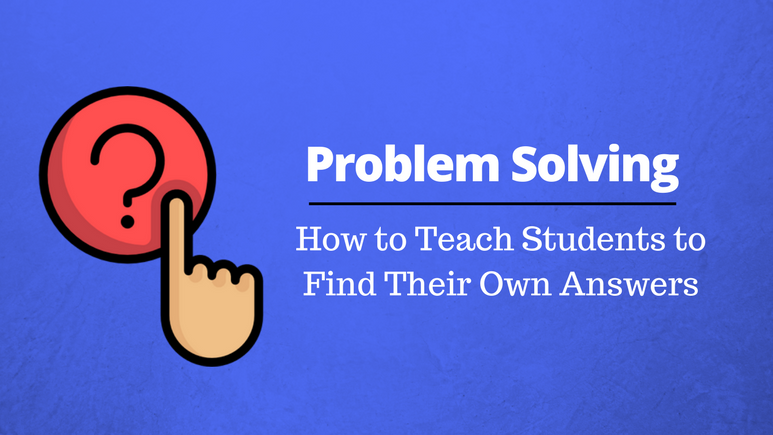
At some point or another, most people have experienced the satisfaction of teaching yourself something you didn’t know how to do before. Whether it’s changing a flat tire for the first time or learning a new function in Excel, there is something exciting about teaching yourself something new. Not only that, but problem-solving is a valuable skill in students’ future academic and professional careers.
In classrooms, students (and teachers) can have the misconception that school involves a one-way flow of information from the teacher to the student. And in the past, this was a relatively true notion.
Today, though, most teachers recognize that instead of focusing on what we teach students, we should be focusing on how we teach them to teach themselves. Sure, it’s nice to feel wanted in the classroom, but it’s much better for students to develop the independence to solve their own problems and find their own answers.
Obviously, technology can be an invaluable tool when it comes to teaching students to find their own answers and take control of their own learning. Below are a few initial steps to take to get students on track to become their own teachers.
1. Teach students to troubleshoot problems.
Develop a set plan in your classroom for what students do when they get stuck or need an answer to their question. A good first step is always going back to read the directions as sometimes a student’s answer is right in front of them if he would just take the time to read it. It can also be useful to have displayed posters or a digital class folder that students can access with a step-by-step guide on how to troubleshoot or where to find an answer. As many students are visual learners, the more explicit you can make these (use screenshots) the better.
2. Ask 3 before me
Many veteran teachers use this technique in their classrooms to teach students independence as well as teamwork, and it’s a great move with technology as well. If a student has a question about a concept or direction, she needs to ask three peers for help before raising her hand to ask the teacher. Oftentimes someone nearby will be able to help the student, freeing you up for students who might need more consistent support. This approach has the added benefit of having students teach one another which builds comprehension as well as ownership of the task.
3. Google it!
Have students Google the answer! This might sound basic, but the act of seeking out answers whenever you’re faced with an obstacle is extremely valuable.
To help develop this skill we have a course called Internet Search Activities, which is designed to teach students how to effectively use search engines to find and verify information. Through this interactive activity, students will build skills in using the internet competently and confidently to find answers on their own. Check out the iAcademy Internet Search Activity Course here!
Starting with these tips, you can slowly build independence and problem-solving skills in your students, enabling them to teach themselves and each other. Eventually, it may even feel like they’re doing your job for you!



Leave a Reply